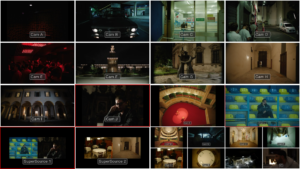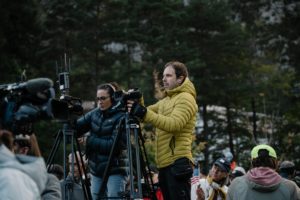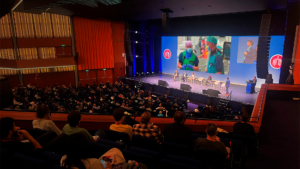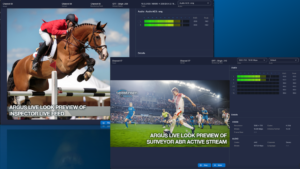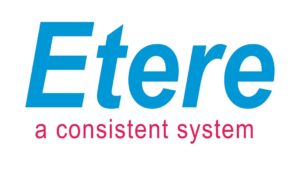And now for something completely different: Why the journey to OTT must be evolution not revolution – Spicy Mango
You don’t need to be Nostradamus to work out that linear TV will one day go the way of Monty Python’s parrot: it will cease to be. The timing, however, is less predictable. Because unlike Python’s Norwegian Blue, scheduled TV continues to provide meaningful company in our living rooms. It will inevitably fall from its perch, but with a sizeable audience still feeding it, there’s plenty of life in the old thing yet. As legacy media inches towards a digital-only world, the prolonged squawk of scheduled TV is a major complication. Companies need to deliver for today while planning for a different tomorrow.
According to Ofcom, broadcast still accounts for 59% of our TV viewing. Although this figure continues to decline – live TV viewing fell 13% in 2021 – TV advertising is resurgent (reaching £4.7 billion at the last count). The numbers present a challenge to media companies looking to retune for the digital age. OTT is the future, but with audiences still drawn to traditional channels, businesses cannot afford to abandon a model that continues to attract the bulk of its viewers and billions in advertising. The transition to digital-only must be a measured evolution.
Media companies should plan for a complete switch to digital over the next 10 years. By then, if current migration rates continue, broadcast’s share of viewing could be as low as 35%. Then it really will be time for something completely different. Progress requires an incremental transition that doesn’t leave audiences behind. It’s a balancing act that calls for a clear roadmap, organisational agility and creative collaboration.
Ultimately, consumers don’t care how TV reaches them – they simply want the best content and seamless experiences as they move between channels. And so, while we await a generational shift in viewing habits, broadcasters need to maintain linear while at the same time delivering quality streaming experiences. They need to do Everything Everywhere All at Once.
Holy Grail
The Holy Grail of digital-only is the definition of ‘completely different’ for legacy media. Making the transition requires significant change, not only within businesses, but also in how they nurture customers. There’s no choice but to plan for gradual change.
There are multiple impact factors to consider. The key ones include:
- Rewiring the user experience. Transitioning to digital-only requires re-educating an audience that’s been conditioned to watch TV in a certain way. That new experience doesn’t just need designing, it needs explaining. OTT changes the way we surface, navigate and watch content. Familiarity takes time.
- Taking care of advertisers. Ad revenues are key to commercial success. This presents a dichotomy. Sure, digital advertising is more measurable (which is great news for advertisers) but it also poses a challenge for broadcast media that’s happily exploited the generality of BARB. Attracting advertisers will hinge on UX.
- Redefining investment programmes. Legacy media has invested heavily in infrastructure that it cannot write off overnight. Likewise, companies can’t suddenly magic up £50m for a new digital platform or redesign applications at will. Investment programmes must be pragmatic, long-term and agile.
- Filling the skills gap. Managing a software-oriented domain requires specialist skills that, in many organisations, are thin on the ground. That skills mix encompasses everything from a knowledge of streaming formats, video codecs and CDNs, to software design/architecture and Cloud IT.
Companies must address these impact factors. You can’t do everything at once. But you can plan for change, building in a flexibility that allows you to pivot as circumstances fluctuate.
Architecting for change is crucial when building a scalable streaming platform. Inflexible architecture that can’t adapt to evolving requirements will cost you time, money and customers. Most challenges can be resolved painlessly if the architecture you design at the outset isolates microservices instead of hardcoding a monolith.
However, success isn’t just about having agile software architecture. The business must be flexible too. When it is, companies can adjust services, resources and output to respond to inevitable change.
For many, the journey to digital-only will feel daunting, taking companies outside their comfort zones. The consequences of making a wrong turn can appear huge. Organisations therefore need to break the journey down into manageable chunks.
#1: Be clear on where you’re going
We’re on a one-way street to digital-only and most organisations are well into that journey. However, many could be bolder in their decision-making and how they communicate their ambitions. That vision is the anchor for everything. Your destination may not change but the route you take to get there almost certainly will.
#2: Know where you are
Take stock of where you are today. Are you at the end of a technology lifecycle and ready for a refresh? Have you recently implemented something that comes with a financial commitment? Or are you at the end of a change programme with little appetite for another one tomorrow? Knowing where you are in the cycle – financial and technologically – is crucial. Once you’ve got a clear picture of where you are and where you’re heading, it’s easier to map out the steps that will take you there.
#3: Prepare a roadmap
A detailed roadmap is imperative, acting as a satnav to guide you to key milestones. The roadmap should fill in the gaps between A and B that will accelerate you through the journey. It’s here where companies can be ‘revolutionary’ in their technology decisions. For example, if you have an on-premise solution, is it time to be bold and move everything to the Cloud? Have you got the skills to architect, build and operate that solution? What are the implications for architecture or UX? The answers will highlight gaps that need filling, with ramifications for people, processes and technology.
#4 Be brave
Technology decisions are rarely revolutionary; most OTT tech already exists and is proven to work. No, the real revolutionary thinking will likely relate to your model, your strategy, your people and your processes. It’s about looking at your business holistically and asking big questions. Do we need to own this technology? Can we rent it as SAAS? Do we have in-house capability to deliver the vision? Do we need to partner, collaborate or acquire? Will our current processes work? How do we change them? Big questions require brave answers and organisational agility.
#5 Collaborate
There’s no getting away from it, video is complex. If you don’t understand video workflow and how that works from ingestion to consumption, you’ll struggle to get it right. You can nail your vision all day long, but if you’re not on top of the basics, you’ll never translate video into value.

In a changing environment, creative collaboration is the smartest way to advance. A good partner – with domain expertise and proven experience delivering scalable streaming solutions – can nurture you in the right direction. They’ll help you design, build and execute your roadmap. And they’ll architect for change to create OTT platforms that flex for tomorrow.
Fundamentally, legacy media companies must juggle new and old if they’re to transition to a digital-only world. They need to do Everything Everywhere All at Once, and they need to do something completely different. Measured evolution is the only way forward. But you’ll need to start soon… before linear TV becomes a proverbial ex-parrot.
- Business Models
- Digital Transformation
- Collaboration
- Manage
- Publish
- Cloud & Virtualization
- AI/ML, Data & Analytics
- OTT & Streaming Platforms


